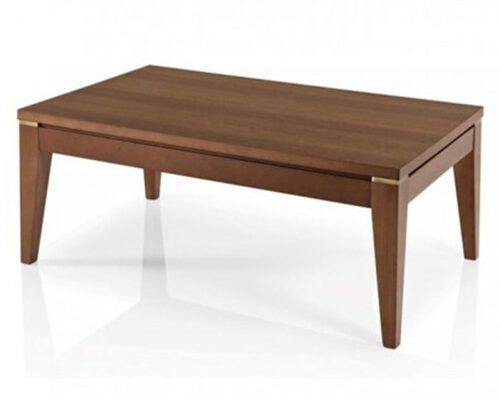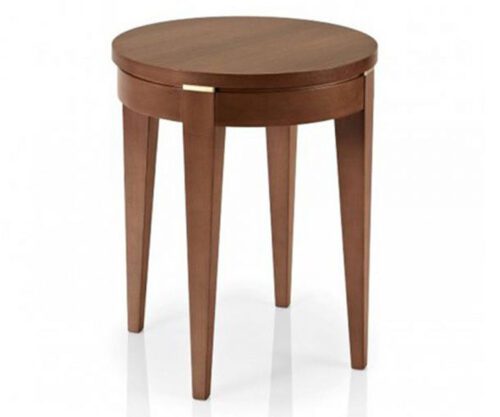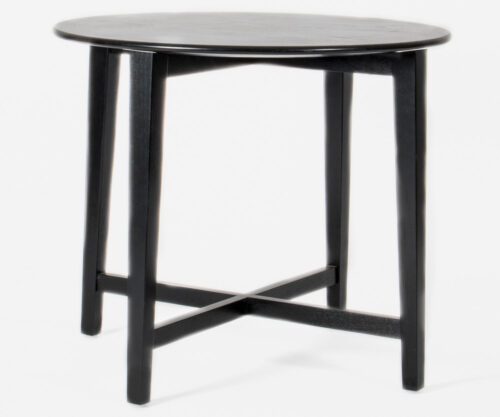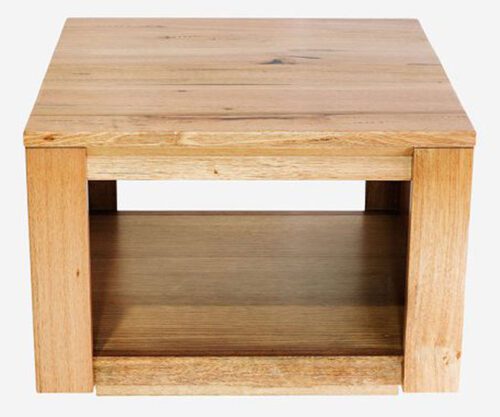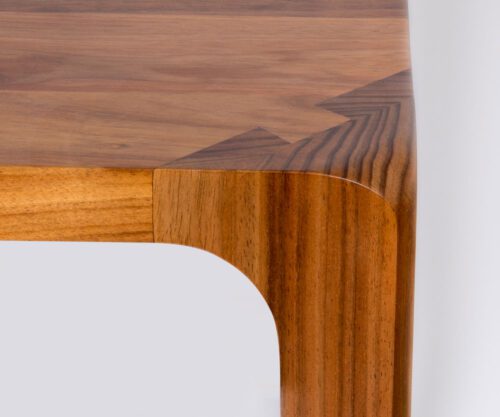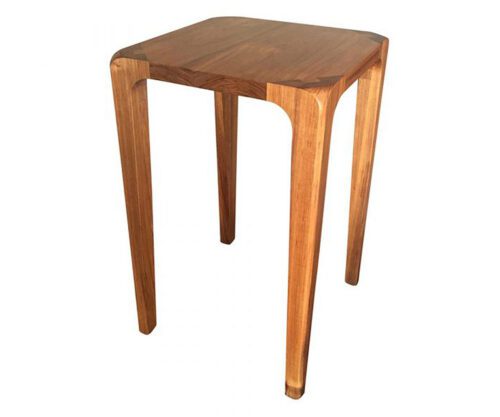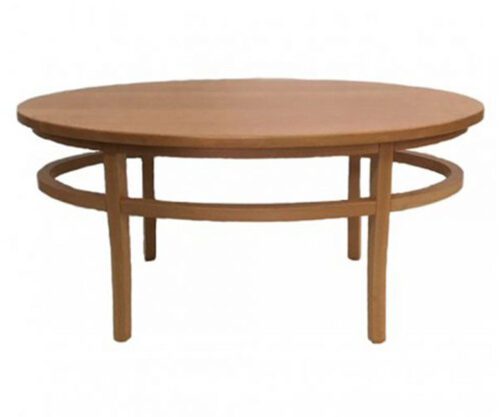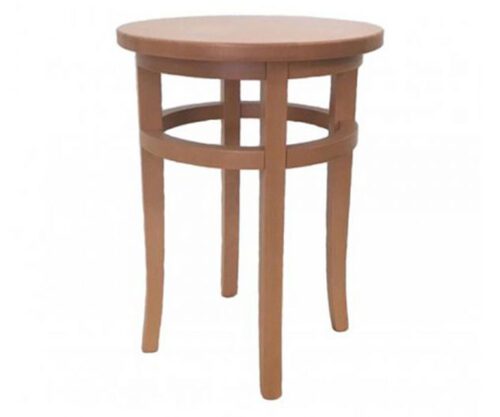Creating Comfortable Spaces in Aged Care: The Power of Lounge Side Tables

In aged care, creating a comfortable and inviting environment is paramount. It’s not just about providing practical care, but also about fostering a sense of home for the residents. One often overlooked but incredibly important piece of furniture that can significantly contribute to this goal is the lounge side table.
The Significance of Lounge Side Tables in Aged Care
Lounge side tables, though small, play a vital role in shaping the comfort and convenience of an aged care facility. They serve as a handy spot for residents to place their personal belongings, a cup of tea, reading materials, or even a decorative plant. By having these essentials within easy reach, residents can enjoy their leisure time without unnecessary strain or discomfort.
Moreover, lounge side tables are instrumental in defining the aesthetic appeal of the space. The right table can add warmth and homeliness to a lounge, making it more inviting for residents and their visitors.
What Makes a Good Lounge Side Table in Aged Care?
When choosing a lounge side table for an aged care setting, there are several factors to consider:
- Height and Size: The table should be of an appropriate height and size to match the accompanying seating furniture. This will ensure that residents can use it easily without needing to stretch or bend uncomfortably.
- Stability and Durability: Given that some residents might lean on or use the table for support, it’s crucial that the table is sturdy and well-built. Look for tables with a solid base and high-quality construction.
- Easy to Clean: Hygiene is critical in any aged care facility. Therefore, opt for tables made from materials that can be easily wiped clean and disinfected, such as glass, metal or sealed wood.
- Safety Features: To prevent accidents, choose tables with rounded corners and edges. Additionally, tables with non-slip feet can provide added safety by preventing unwanted movement.
- Material: The choice of material can impact the durability, maintenance, and aesthetics of the side table. Wood, metal, glass, or a combination of these are common options. Each material has its pros and cons, so consider the specific needs of your space.
- Storage: Some side tables come with drawers or shelves, offering extra storage space. This can be handy for keeping remote controls, reading glasses, or other small items.
- Shape: Side tables come in various shapes – round, square, rectangular, oval. The shape can influence how well the table fits into your space and how much surface area it provides.
- Style: The style of the side table should complement the overall décor of the lounge. Whether it’s modern, traditional, rustic, or industrial, the right style can enhance the aesthetic appeal of the room.
- Mobility: If you need to move the table around often, consider a lightweight design or a table with wheels.
- Safety Features: Especially important in environments like aged care facilities, safety features such as rounded corners, secure fittings, and non-slip feet can prevent accidents.
- Ease of Assembly: Some tables require assembly. Check whether the table comes with clear instructions and all the necessary tools or hardware.
- Sustainability: If environmental impact is a concern, look for tables made from sustainable materials, such as reclaimed wood or recycled metal.
- Price: Last but not least, consider your budget. The price of side tables can vary greatly depending on factors like material, brand, and design. Remember that while it’s important to find a table within your price range, it’s also worth investing in quality that will last.
Types of Lounge Side Tables
When choosing lounge side tables for aged care, it’s essential to consider both functionality and design. Here are some types of lounge side tables that can add comfort and convenience in an aged care setting:
- Chair Tables: These offer a two-in-one solution, providing a chair with a built-in table. They’re ideal for making the most out of limited space and can be particularly useful for elderly individuals who may have difficulty moving between a separate chair and table.
- End Tables: Available in various designs like the Fadzai End Table or the Rolande End Table, these can provide a stylish yet functional addition to any lounge area. They offer a convenient place for residents to set down a drink, book, or other items.
- Multi-use Sofa Side Tables: These tables can serve multiple purposes, making them a versatile choice for aged care facilities. Some models even come with features like an ergonomic stand assist safety handle for added support.
- Nesting Tables: These consist of two or more tables of different sizes that can be neatly stacked together. They’re a great option if you need flexibility, as they can be used separately when needed and tucked away to save space.
- C-Tables: These tables have a unique “C” shape that allows them to slide under a sofa or chair, bringing the table surface closer to the individual. This can be particularly useful for seniors who may have limited mobility.
- Outdoor End Tables: If your aged care facility has an outdoor lounge area, consider durable outdoor end tables. They’re designed to withstand the elements while still providing a convenient surface for residents to use.
Remember, the best lounge side table for your aged care setting will depend on the specific needs of your residents, the available space, and the overall décor of your lounge area.
Enhancing the Aesthetic Appeal
Beyond functionality, the visual aspect of a lounge side table should not be overlooked. An attractive table can enhance the overall ambience of the lounge. Choose styles and colours that complement the rest of the room’s décor. Consider tables with unique features or designs that can serve as conversation starters and add character to the space.
In conclusion, lounge side tables hold significant power in creating comfortable spaces in aged care facilities. They offer practical benefits while also contributing to the overall aesthetic and atmosphere of the lounge. By carefully considering the design, functionality, safety and aesthetic appeal of these tables, you can greatly enhance the comfort and quality of life for the residents in your care.
FAQs About Lounge Side Tables in Aged Care
Why is the design of lounge side tables important in aged care settings?
The design of lounge side tables is crucial in aged care settings to ensure they meet the specific needs of elderly residents, providing both functionality and aesthetic appeal.
What features should be considered in the design of lounge side tables for aged care?
Considerations should include ease of accessibility, durability, rounded edges for safety, appropriate height for seated individuals, and a design that complements the overall decor of the space.
How can the design of lounge side tables contribute to the comfort of residents in aged care facilities?
Comfort is enhanced by choosing tables with user-friendly designs, suitable dimensions, and materials that are easy to clean. Rounded edges and height considerations contribute to a safer and more comfortable experience.
Are there specific materials recommended for the construction of lounge side tables in aged care?
Materials should be chosen for durability and ease of maintenance. Common materials include sturdy wood, metal, or high-quality plastics, with finishes that are resistant to scratches and easy to clean.
What role does the size and shape of lounge side tables play in aged care environments?
Size and shape are critical considerations to ensure that lounge side tables are proportionate to the seating and mobility needs of elderly individuals. They should be large enough to hold necessary items but not overly cumbersome.
How can the design of lounge side tables accommodate the diverse needs of elderly residents?
Customizable or adjustable features, such as height-adjustable tables or those with additional storage options, can accommodate the diverse needs of elderly residents, ensuring the tables are versatile and functional.
How does the aesthetic design of lounge side tables impact the overall atmosphere of aged care spaces?
Aesthetic design contributes to the overall ambiance of aged care spaces. Coordinated styles and color schemes can create a pleasant and familiar environment for residents, positively influencing their well-being.
Can lounge side tables be designed with additional features to enhance usability in aged care settings?
Yes, additional features like built-in storage, easily accessible compartments, or attached reading lamps can enhance the usability of lounge side tables in aged care settings, providing convenience for residents.
How can facility staff and designers collaborate to ensure the most appropriate lounge side table design for aged care?
Collaboration involves understanding the specific needs and preferences of residents, considering the layout of the space, and selecting lounge side tables that align with the overall design and functionality goals of the facility.
Are there regulations or guidelines for the design of furniture, including lounge side tables, in aged care facilities?
Yes, regulations and guidelines may exist, and designers should be aware of them to ensure that lounge side tables meet safety and accessibility standards in aged care environments. Compliance with relevant standards is essential in creating a safe and supportive living space for elderly residents.
Popular Choices for Aged Care Lounge Side Tables
Discover the transformative role of lounge side tables in aged care, creating comfort and convenience that enhances residents’ quality of life.
More News
Creating Comfortable Spaces in Aged Care: The Power of Lounge Side Tables

In aged care, creating a comfortable and inviting environment is paramount. It’s not just about providing practical care, but also about fostering a sense of home for the residents. One often overlooked but incredibly important piece of furniture that can significantly contribute to this goal is the lounge side table.
The Significance of Lounge Side Tables in Aged Care
Lounge side tables, though small, play a vital role in shaping the comfort and convenience of an aged care facility. They serve as a handy spot for residents to place their personal belongings, a cup of tea, reading materials, or even a decorative plant. By having these essentials within easy reach, residents can enjoy their leisure time without unnecessary strain or discomfort.
Moreover, lounge side tables are instrumental in defining the aesthetic appeal of the space. The right table can add warmth and homeliness to a lounge, making it more inviting for residents and their visitors.
What Makes a Good Lounge Side Table in Aged Care?
When choosing a lounge side table for an aged care setting, there are several factors to consider:
- Height and Size: The table should be of an appropriate height and size to match the accompanying seating furniture. This will ensure that residents can use it easily without needing to stretch or bend uncomfortably.
- Stability and Durability: Given that some residents might lean on or use the table for support, it’s crucial that the table is sturdy and well-built. Look for tables with a solid base and high-quality construction.
- Easy to Clean: Hygiene is critical in any aged care facility. Therefore, opt for tables made from materials that can be easily wiped clean and disinfected, such as glass, metal or sealed wood.
- Safety Features: To prevent accidents, choose tables with rounded corners and edges. Additionally, tables with non-slip feet can provide added safety by preventing unwanted movement.
- Material: The choice of material can impact the durability, maintenance, and aesthetics of the side table. Wood, metal, glass, or a combination of these are common options. Each material has its pros and cons, so consider the specific needs of your space.
- Storage: Some side tables come with drawers or shelves, offering extra storage space. This can be handy for keeping remote controls, reading glasses, or other small items.
- Shape: Side tables come in various shapes – round, square, rectangular, oval. The shape can influence how well the table fits into your space and how much surface area it provides.
- Style: The style of the side table should complement the overall décor of the lounge. Whether it’s modern, traditional, rustic, or industrial, the right style can enhance the aesthetic appeal of the room.
- Mobility: If you need to move the table around often, consider a lightweight design or a table with wheels.
- Safety Features: Especially important in environments like aged care facilities, safety features such as rounded corners, secure fittings, and non-slip feet can prevent accidents.
- Ease of Assembly: Some tables require assembly. Check whether the table comes with clear instructions and all the necessary tools or hardware.
- Sustainability: If environmental impact is a concern, look for tables made from sustainable materials, such as reclaimed wood or recycled metal.
- Price: Last but not least, consider your budget. The price of side tables can vary greatly depending on factors like material, brand, and design. Remember that while it’s important to find a table within your price range, it’s also worth investing in quality that will last.
Types of Lounge Side Tables
When choosing lounge side tables for aged care, it’s essential to consider both functionality and design. Here are some types of lounge side tables that can add comfort and convenience in an aged care setting:
- Chair Tables: These offer a two-in-one solution, providing a chair with a built-in table. They’re ideal for making the most out of limited space and can be particularly useful for elderly individuals who may have difficulty moving between a separate chair and table.
- End Tables: Available in various designs like the Fadzai End Table or the Rolande End Table, these can provide a stylish yet functional addition to any lounge area. They offer a convenient place for residents to set down a drink, book, or other items.
- Multi-use Sofa Side Tables: These tables can serve multiple purposes, making them a versatile choice for aged care facilities. Some models even come with features like an ergonomic stand assist safety handle for added support.
- Nesting Tables: These consist of two or more tables of different sizes that can be neatly stacked together. They’re a great option if you need flexibility, as they can be used separately when needed and tucked away to save space.
- C-Tables: These tables have a unique “C” shape that allows them to slide under a sofa or chair, bringing the table surface closer to the individual. This can be particularly useful for seniors who may have limited mobility.
- Outdoor End Tables: If your aged care facility has an outdoor lounge area, consider durable outdoor end tables. They’re designed to withstand the elements while still providing a convenient surface for residents to use.
Remember, the best lounge side table for your aged care setting will depend on the specific needs of your residents, the available space, and the overall décor of your lounge area.
Enhancing the Aesthetic Appeal
Beyond functionality, the visual aspect of a lounge side table should not be overlooked. An attractive table can enhance the overall ambience of the lounge. Choose styles and colours that complement the rest of the room’s décor. Consider tables with unique features or designs that can serve as conversation starters and add character to the space.
In conclusion, lounge side tables hold significant power in creating comfortable spaces in aged care facilities. They offer practical benefits while also contributing to the overall aesthetic and atmosphere of the lounge. By carefully considering the design, functionality, safety and aesthetic appeal of these tables, you can greatly enhance the comfort and quality of life for the residents in your care.
FAQs About Lounge Side Tables in Aged Care
Why is the design of lounge side tables important in aged care settings?
The design of lounge side tables is crucial in aged care settings to ensure they meet the specific needs of elderly residents, providing both functionality and aesthetic appeal.
What features should be considered in the design of lounge side tables for aged care?
Considerations should include ease of accessibility, durability, rounded edges for safety, appropriate height for seated individuals, and a design that complements the overall decor of the space.
How can the design of lounge side tables contribute to the comfort of residents in aged care facilities?
Comfort is enhanced by choosing tables with user-friendly designs, suitable dimensions, and materials that are easy to clean. Rounded edges and height considerations contribute to a safer and more comfortable experience.
Are there specific materials recommended for the construction of lounge side tables in aged care?
Materials should be chosen for durability and ease of maintenance. Common materials include sturdy wood, metal, or high-quality plastics, with finishes that are resistant to scratches and easy to clean.
What role does the size and shape of lounge side tables play in aged care environments?
Size and shape are critical considerations to ensure that lounge side tables are proportionate to the seating and mobility needs of elderly individuals. They should be large enough to hold necessary items but not overly cumbersome.
How can the design of lounge side tables accommodate the diverse needs of elderly residents?
Customizable or adjustable features, such as height-adjustable tables or those with additional storage options, can accommodate the diverse needs of elderly residents, ensuring the tables are versatile and functional.
How does the aesthetic design of lounge side tables impact the overall atmosphere of aged care spaces?
Aesthetic design contributes to the overall ambiance of aged care spaces. Coordinated styles and color schemes can create a pleasant and familiar environment for residents, positively influencing their well-being.
Can lounge side tables be designed with additional features to enhance usability in aged care settings?
Yes, additional features like built-in storage, easily accessible compartments, or attached reading lamps can enhance the usability of lounge side tables in aged care settings, providing convenience for residents.
How can facility staff and designers collaborate to ensure the most appropriate lounge side table design for aged care?
Collaboration involves understanding the specific needs and preferences of residents, considering the layout of the space, and selecting lounge side tables that align with the overall design and functionality goals of the facility.
Are there regulations or guidelines for the design of furniture, including lounge side tables, in aged care facilities?
Yes, regulations and guidelines may exist, and designers should be aware of them to ensure that lounge side tables meet safety and accessibility standards in aged care environments. Compliance with relevant standards is essential in creating a safe and supportive living space for elderly residents.
Popular Choices for Aged Care Lounge Side Tables
Discover the transformative role of lounge side tables in aged care, creating comfort and convenience that enhances residents’ quality of life.
Commercial furniture by room
Based in Brisbane, we’re an Australian manufacturer of health and aged care furniture, retirement living furniture, hotel and accommodation furniture and student accommodation furniture. We also supply a range of commercial office furniture.
Is your commercial furniture built to last?
Not sure? Get your Furniture Quality Checklist today.
Discover what you need to know before purchasing commercial furniture. Confidently order furniture without compromising on quality, style, and the comfort and safety of your clients.
PLUS, sign up for Retirement Living and Aged Care Industry News.

